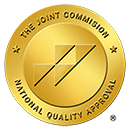Do I Use Urgent Care or Emergency Room?
We know you have questions about going to an urgent care or emergency room (ER). We are here to provide answers.
Should You Use Urgent Care or Emergency Room?
The answer depends on the illness you are trying to see a physician for.
Urgent Care facilities can have less wait time than major hospital emergency rooms, but they are typically only open until 6:00 pm – 5 days a week. When a medical emergency occurs after hours, you are likely to find that no urgent care facility is available to treat you and your family.
Unlike urgent care centers and large hospital ERs, free standing emergency rooms like the ones owned by SignatureCare Emergency Center in Houston (Montrose, Heights, Memorial City and Westchase), Sugar Land / Mission Bend, Stafford, Austin and College Station, TX, have short or no wait times, accepts most major medical insurance plans and have board-certified emergency room trained doctors on standby 24 hours.
Some of these free-standing emergency rooms also have convenient locations. So, how do you know when to go to an urgent care center versus an when to go to a free standing emergency room?
When to go to a Free Standing Emergency Room
Free standing emergency rooms are equipped to handle the most complex and critical medical needs. This includes broken or detached limbs, heart attacks, stroke, and other life-threatening conditions. Urgent care facilities are not.
Urgent Care Centers Treat Minor Illnesses, Like Family Doctors
Think of urgent care as your family doctor. If you would feel comfortable taking your illness or concern to your doctor, then urgent care is the right place to go.
This could include a sore throat, sinus pressure, a nagging pain in your joint, a slight fever, and many other minor conditions. Some urgent care facilities have on-site pharmacies that make it simple to get a prescription such as an antibiotic filled before you leave.

The emergency room covers all other medical concerns that may need rapid response or advanced treatment. Below is a partial list of symptoms that are best treated in the emergency room.
Symptoms Best Treated in the Emergency Room (ER)
- Persistent chest pain, especially if it radiates to your arm or jaw or is accompanied by sweating, vomiting, or shortness of breath
- Difficulty breathing
- Any severe pain, particularly in the abdomen or starting halfway down the back
- Sudden clumsiness, loss of balance, or fainting
- Sudden difficulty speaking or trouble understanding speech
- Altered mental status or confusion, including suicidal thoughts
- Sudden weakness or paralysis, especially on one side of the face or body
- Severe heart palpitations
- Sudden, severe headache
- Sudden testicular pain and swelling
- Newborn baby with a fever (a baby less than three months old with a temperature of 100.4 degrees or higher needs to be seen right away)
- Falls that cause injury or occur while taking blood thinners
- Sudden vision changes, including blurred or double vision and full or partial vision loss
- Broken bones or dislocated joints
- Deep cuts that require stitches — especially on the face — or a large open wound that won’t stop bleeding
- Head or eye injuries
- Severe flu or cold symptoms
- High fevers or fevers with a rash
- Vaginal bleeding during pregnancy
- Severe and persistent vomiting or diarrhea
- Serious burns
- Seizures without a previous diagnosis of epilepsy
As you can see, there is a distinct difference between what the ER treats versus what urgent care centers treat. Urgent care centers fill a gap when you cannot get to the ER doctor.
It can be great if you fall ill out of town and it is not life threatening. But if any of the symptoms above occur, go to the ER at once. Your life might depend on your decision.




